Natural Beekeeping
“The future of bees is not in 1 beekeeper keeping 60,000 hives but in 60,000 keepers with one hive each.” Simon Buxton
This is a quote I heard last weekend when I attended Milkwood
Permaculture’s Natural Bee Keeping course in an inner city suburb of
Sydney.
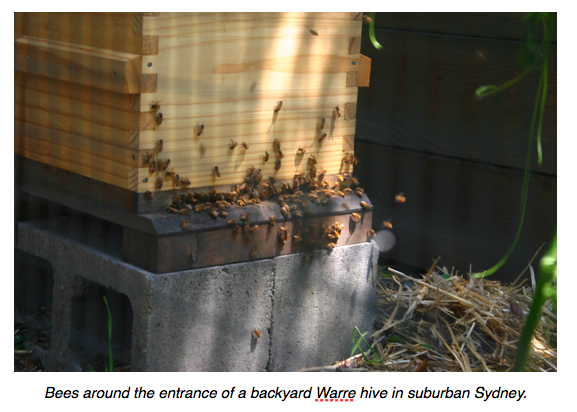
I was initially inspired about bee keeping after viewing “Vanishing of the Bees”, a documentary highlighting the peril of our worldwide bee population. Can you imagine a world without bees? Of the 100 crops that provide 90% of the world’s food, 71 of them are dependent on bees for pollination. 4000 vegetable varieties exist because of bee pollination.
But bees have been under threat recently because of disease and pests that are destroying entire colonies. Loss of quantity and diversity of forage for bees has occurred because of constant clearing of understory planting for agriculture and urban development. A loss of habitat, a dependence on agricultural chemicals and even use of toxic bee keeper chemicals all contribute to our recent dilemma in bee health and declining populations.
I’m often hearing comments from people noticing a decline in the number of bees in their own backyards but I haven’t really seen it myself. My garden is very attractive to bees with lots of flowers, so bees have still found their way to my own back yard and veggie pollination rates are high (I’ll put together another post later about how make a bee-friendly garden).
I made a point of attending my local permaculture meeting when an amatuer bee keeper was scheduled to talk. He convinced us that it was possible to keep a hive in every back yard. He adopted a conventional approach to bee keeping that seemed to be very labour intensive and involved a high risk of stings if you weren’t suited up. Because I run workshops regularly from my backyard, I was reluctant to expose aspiring organic gardeners to the fear of bee stings if they attended my class.
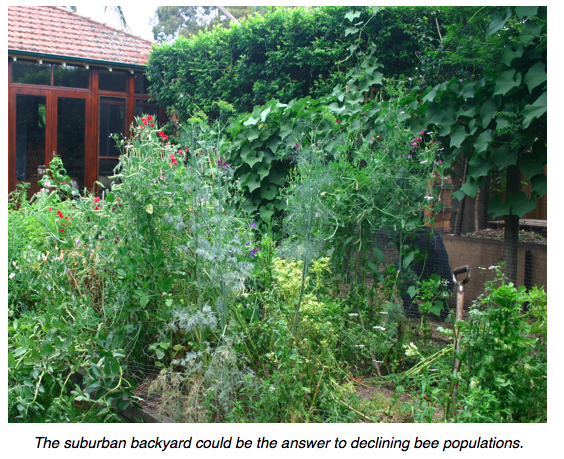
So when I heard about the natural bee keeping course that went against traditional methods and, instead, adopted an approach more in line with the innate habits of bees themselves, I had to see it for myself. Pictures of bees being handled without masses of protective gear inspired me … natural, organic methods and not-so-cranky bees!
Here’s a picture that I took of our natural bee keeper and teacher, Tim Malfroy, showing just how possible it is.
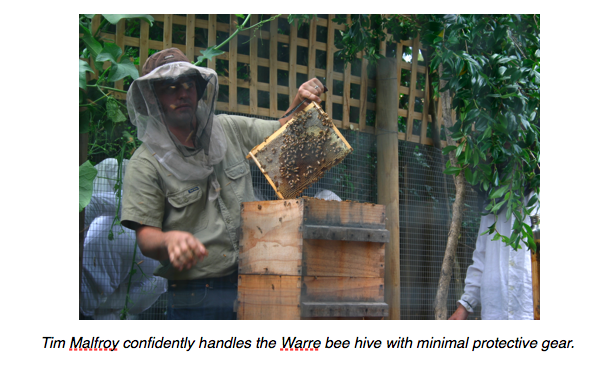
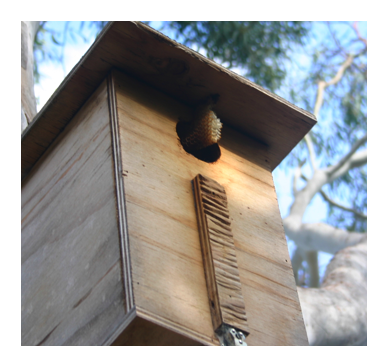
Here’s a photo I took recently in Canberra, where bees overtook a bird
nesting box positioned high in a neighbourhood tree. Note the way the
bees have built the comb from the roof of the box when left to their own
devices.
Natural bee keeping is all about bio-mimicry with minimal intrusion to the hive. The hives contain top bars instead of full frames to allow natural development of comb by the bees, just the way they would build comb naturally in a hollow log.
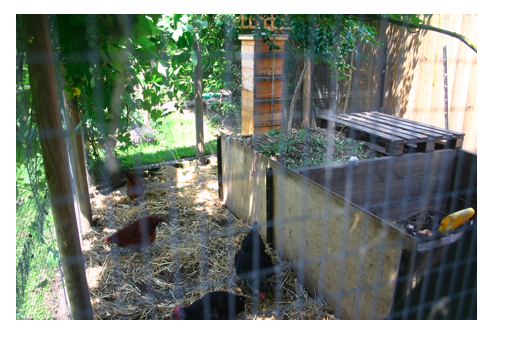
The course included a visit to a suburban house with a warre bee hive. Here we are in a small backyard that nicely contained the hive within the chicken run. A pumpkin vine growing over the fence hid the hive to the unsuspecting visitor and also helped direct the flight path of the bees high over the heads of anyone in the garden.
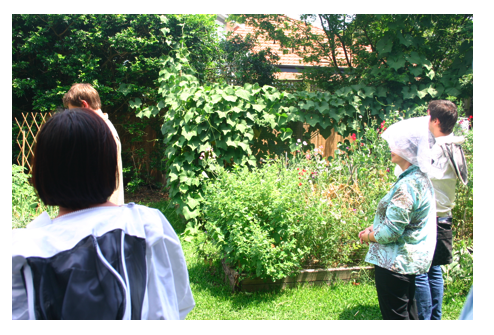
The class is fitted out with whatever protective clothing as they felt comfortable in. Little more that a mesh veil is required with natural bee keeping because of the “unstressed” nature of these bees in a relatively undisturbed hive.
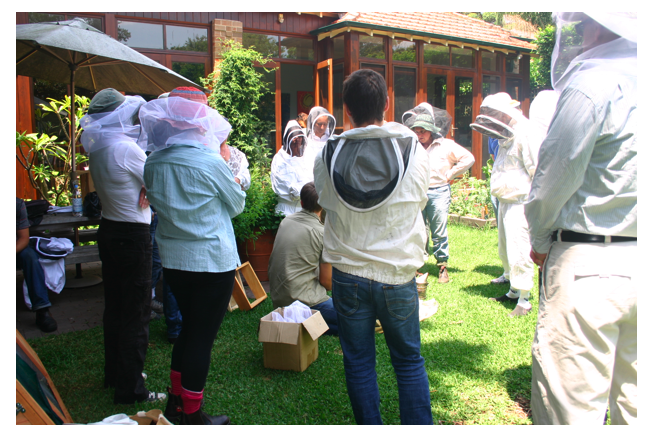
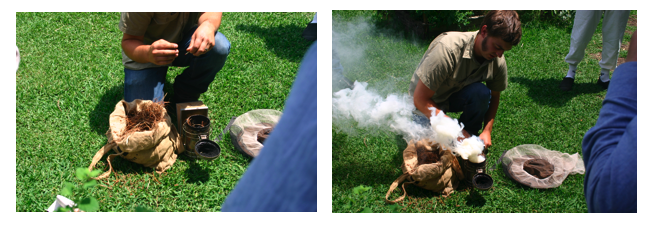
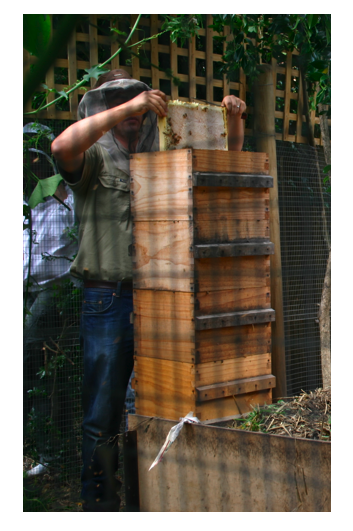
Tim Malfroy lights up the smoker to use as a precautionary measure when handling the bees.
Yet most of his movements were carried out without the use of this tool.
Tim then proceeded to inspect the hive.
Here’s Tim lifting out one frame from the top box full of capped honey, ready to harvest.
The top box is seen in the picture below on its side exposing the combs laden with honey.
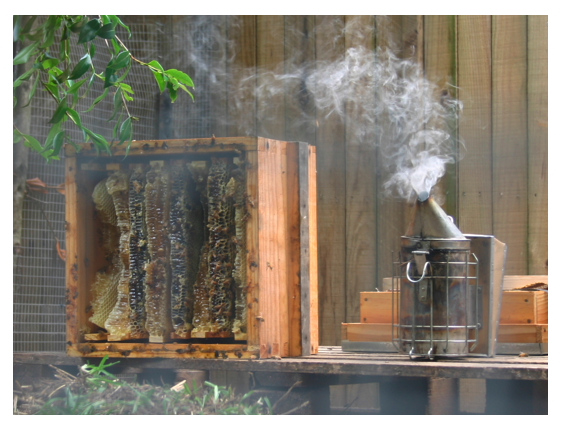
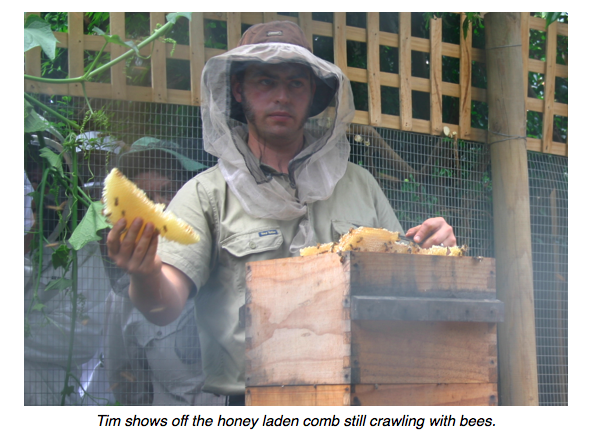
This frame includes bee bread surrounding the brood. We even get to see some of the bees hatch from the brood.
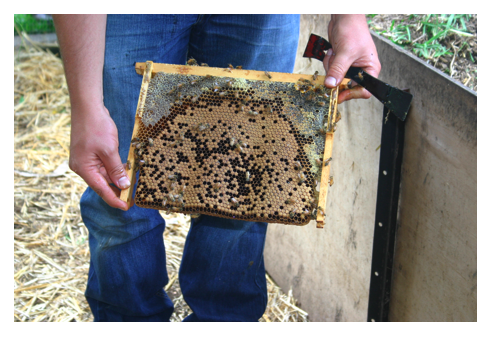
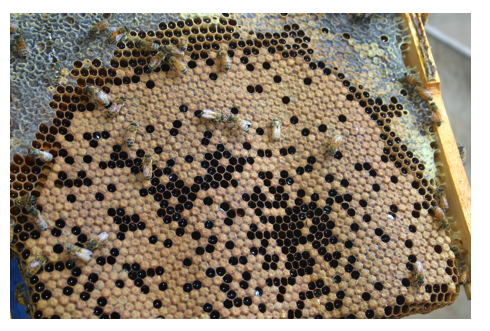
So the future of bees is in our hands and it becomes a responsibility for all of us to ensure their survival. Every backyard can handle a bee hive and by using natural beekeeping techniques it becomes a viable proposition for even the most fearful person. Working with the bees and mirroring their natural instincts can allow them to flourish and provide us with the most delicious untainted natural honey as a bonus.
For more information on natural beekeeping see Tim Malfroy’s website http://www.malfroysgold.com.au/

Comments